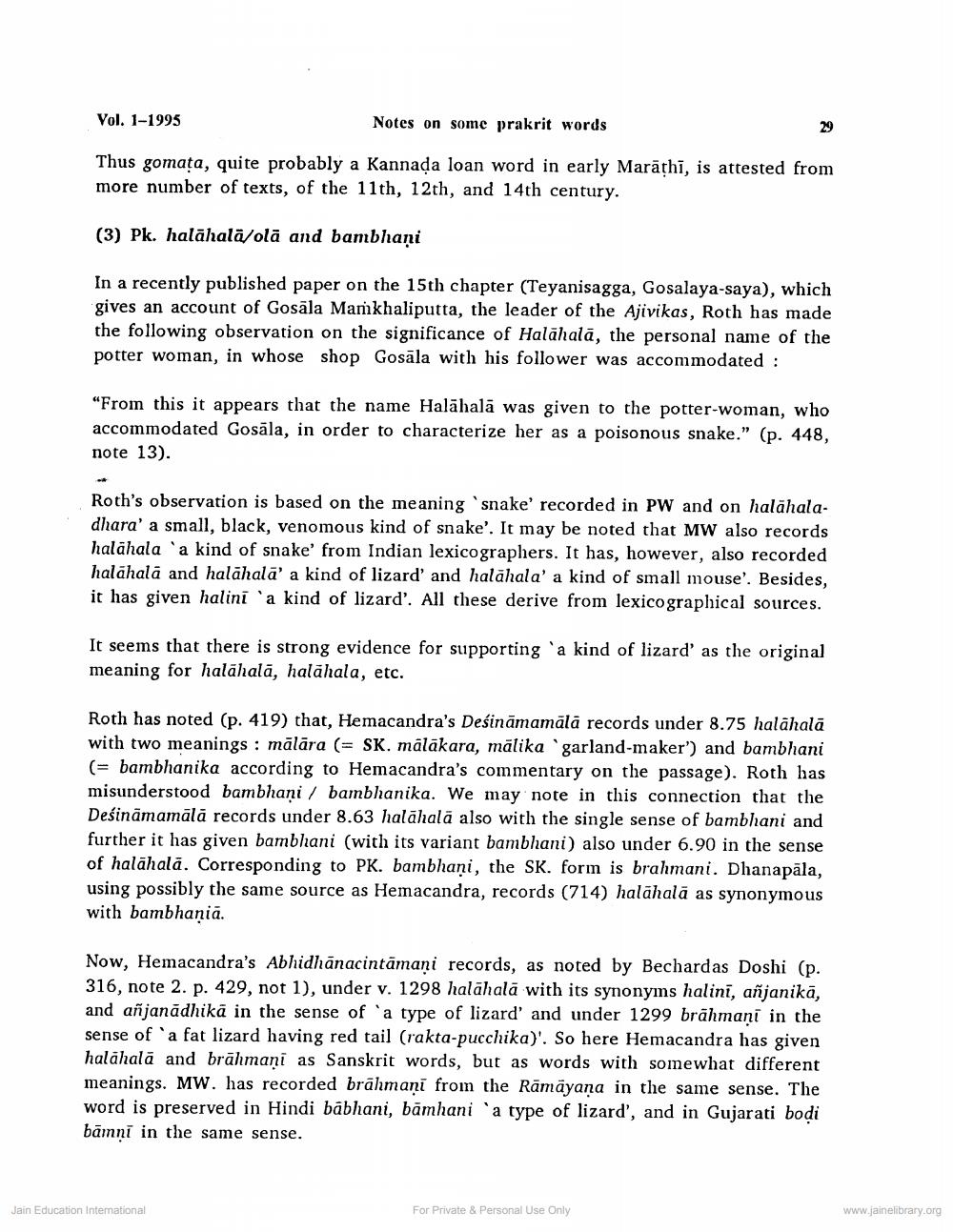________________
Vol. 1-1995
Notes on some prakrit words
Thus gomata, quite probably a Kannada loan word in early Marathi, is attested from more number of texts, of the 11th, 12th, and 14th century.
(3) Pk. halāhalä/olā and bambhani
In a recently published paper on the 15th chapter (Teyanisagga, Gosalaya-saya), which gives an account of Gosāla Mamkhaliputta, the leader of the Ajivikas, Roth has made the following observation on the significance of Halāhalā, the personal name of the potter woman, in whose shop Gosāla with his follower was accommodated :
"From this it appears that the name Halāhalā was given to the potter-woman, who accommodated Gosāla, in order to characterize her as a poisonous snake.” (p. 448, note 13).
Roth's observation is based on the meaning 'snake' recorded in PW and on halāhaladhara' a small, black, venomous kind of snake'. It may be noted that MW also records halāhala 'a kind of snake' from Indian lexicographers. It has, however, also recorded halāhala and halāhalā' a kind of lizard' and halāhala' a kind of small mouse'. Besides, it has given halini a kind of lizard'. All these derive from lexicographical sources.
It seems that there is strong evidence for supporting 'a kind of lizard' as the original meaning for halāhalā, halāhala, etc.
Roth has noted (p. 419) that, Hemacandra's Desināmamālā records under 8.75 halāhalā with two meanings : mālāra (= SK. mālākara, mālika 'garland-maker') and bambhani (= bambhanika according to Hemacandra's commentary on the passage). Roth has misunderstood bambhani / bambhanika. We may note in this connection that the Dešināmamālā records under 8.63 halāhalā also with the single sense of bambhani and further it has given bambhani (with its variant bambhani) also under 6.90 in the sense of halāhala. Corresponding to PK. bambhani, the SK. form is brahmani. Dhanapāla, using possibly the same source as Hemacandra, records (714) halāhalā as synonymous with bambhaniā.
Now, Hemacandra's Abhidhānacintamani records, as noted by Bechardas Doshi (p. 316, note 2. p. 429, not 1), under v. 1298 halāhalā with its synonyms halini, añjanikā, and añjanādhika in the sense of 'a type of lizard' and under 1299 brāhmani in the sense of a fat lizard having red tail (rakta-pucchika)'. So here Hemacandra has given halāhalā and brālmani as Sanskrit words, but as words with somewhat different meanings. MW. has recorded brāhmaṇi from the Rāmāyana in the same sense. The word is preserved in Hindi bābhani, bāmhani 'a type of lizard', and in Gujarati bodi bāmni in the same sense.
Jain Education International
For Private & Personal Use Only
www.jainelibrary.org




